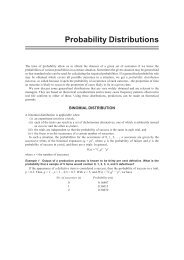International-Business-Dr-R-Chandran-E-book
International-Business-Dr-R-Chandran-E-book
International-Business-Dr-R-Chandran-E-book
Create successful ePaper yourself
Turn your PDF publications into a flip-book with our unique Google optimized e-Paper software.
237<br />
<strong>International</strong> <strong>Business</strong>- <strong>Dr</strong>. R. <strong>Chandran</strong><br />
Competition is a challenge posed by any goods or service with equal or extra<br />
benefits, which cause the company or country to lose its share of business.<br />
Competition may come from the home country, host country or a third<br />
country. It may come from the same range of products or through<br />
outstanding technology or cost effective substitutes. Many companies devote<br />
considerable time and energy facing or managing competitors. As far as<br />
nations are concerned, they consolidate their resources and move ahead,<br />
withstanding competitors and prospering in international trade. To prove<br />
such consolidating forces Michael Porter developed a model, which was<br />
applicable during the second half of twentieth century.<br />
He conducted a comprehensive study of ten nations to learn about the<br />
factors that lead to success and the “five forces” influencing strategy. None<br />
of the five forces were new and were in fact known to people around the<br />
world. Porter advocated the conversion of these five forces in to a main<br />
competitive force that would enable a country to succeed in world trade. By<br />
‘success’ he means that a country should be the centre of production for a<br />
particular item. This implies that for a given quality of goods, production<br />
costs must be the lowest.<br />
However, he does not believe low production costs are solely due to<br />
comparative advantage. Sustaining comparative advantage depends on the<br />
ability to produce more with a given level of inputs. This in turn is based on<br />
innovation and upgrading of products, production processes and<br />
management.<br />
Forces influencing Competitiveness<br />
This model determines the competitive environment as being determined by<br />
the following forces:<br />
1. The power of buyers, and how much leverage they have in<br />
determining the price.<br />
2. The power of suppliers, and the competition among suppliers which<br />
determines the price of inputs to the firm.<br />
3. The threat from potential new entrants in to the industry i.e. the degree<br />
of market contestability.<br />
4. The threat from substitute products.<br />
5. The degree of competition (rivalry) in the industry.<br />
Porter’s Diamond – Four Determinants of National Competitive<br />
Advantage<br />
Only for Private Circulation





